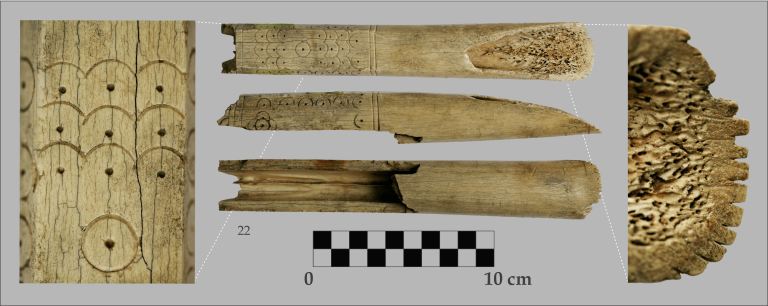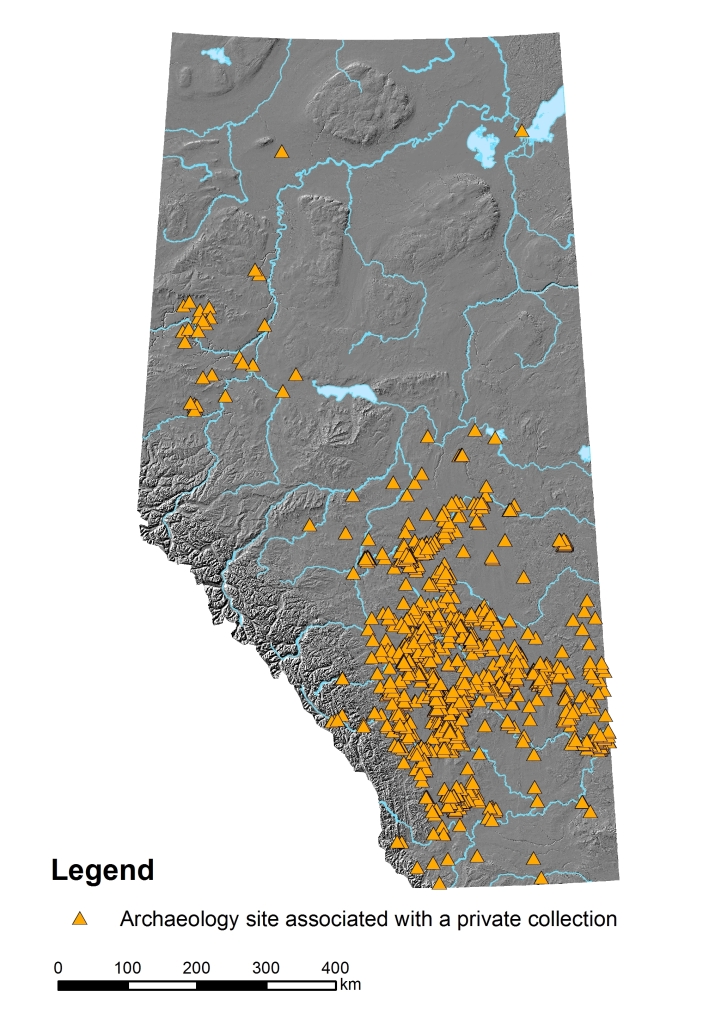Many of the most amazing archaeological sites in Alberta were discovered accidentally by farmers, hunters, hikers, and industry workers. By sharing their finds, everyday Albertans became heritage heroes. Why is it important to share discoveries? When someone finds an artifact and puts it in their garage, one Albertan learns about our heritage. When a person invites an archaeologist to photograph that artifact, thousands of people and multiple generations of Albertans gain a portal to our past.
We’re always on the lookout for the next big site and the next famous Artifact Ambassador. To inspire you to share your finds, here are some facts about citizen discoveries in the world and here at home.
- The Terracotta Army of China, a collection of over 8000 figures buried in a royal tomb over 2000 years ago, was discovered and reported by farmers in 1974
- The Lascaux Cave paintings in France (over 15 000 years old) were discovered by teenagers on a hike in 1940
- 1398 recorded sites in Alberta are based on private collections of artifacts – photographs and information about these collections have been inspiring research projects for decades
- Several archaeological finds by Alberta’s explorers and farmers have since become Provincial Historic Sites and one has even become an UNESCO World Heritage Site!
- Archaeological finds reported by concerned Albertans include ancient rock art, medicine wheels, footprints of extinct animals hunted by people, buffalo jumps, and ancient campsites.

Even a single artifact can contain significant information. For example, staff of the Archaeological Survey recently initiated two projects to document private collections in northern Alberta. So far, we’ve recorded over 20 private collections, which have informed us about ancient weapons, where people traded raw materials from, and what types of activities they were doing thousands of years ago.




Discovering vs. Digging
We encourage every Albertan to report discoveries of artifacts found on the surface or things uncovered accidentally (e.g., while digging a garden, tilling fields, or excavating an underground bunker to hide from a zombie apocalypse) but we don’t encourage active digging for artifacts. Why? Digging or ‘looting’ artifacts is against the law, in part, because so much information is lost when the connection between an artifact and site is severed. Intentional digging can destroy irreplaceable artifacts and information.
To excavate a site, archaeologists must be registered with the province and apply for a permit issued by the Historic Resources Management Branch.
If you have information about a collection of artifacts or an archaeological site, we’d love to hear from you. In addition to a high five, we’ll bestow upon you the title of ‘Artifact Ambassador’: the cherry on top is a legacy you’ll leave of preserving Alberta’s heritage.
You can contact the Archaeological Survey or see the following Report a Find post for more information.
Frequently Asked Questions:
Q: What height do I need to be to report a find and become an Artifact Ambassador?
A: We are interested in reports from people of all heights.
Q: We have an old box of arrowheads in our basement that my grandfather collected decades ago. Are these of interest?
A: Absolutely. You can share photographs, bring your artifacts in to the Historic Resources Management Branch in Edmonton, or invite an archaeologist to photograph your collection. In return, we’ll provide as much information as we can about the significance of your artifacts.
Q: If I become an Artifact Ambassador, will I receive a cape?
A: No. But you will receive a certificate. We encourage you to e-mail a scanned copy of your certificate to all your exes and elementary school teachers to show them that you actually did something with your life. That’ll sting.
Q: If I share information about artifacts discovered on a job site, can I get in trouble?
A: According to the Historic Resources Act, developers are required by law to report discoveries on job sites. By sharing information, you ensure that developments proceed ethically and on budget (the fine for not reporting artifacts can be up to $50,000). When a developer notes an artifact or fossil, we work with them to ensure that historic resources are adequately recorded without significantly cutting into project timelines. By reporting finds, companies demonstrate a respectful commitment to stakeholders and to ethical development. For more information about how developments comply with the Historical Resources Act see the Land Use Planning website.
Q: I found a wild archaeologist with a broken leg: how do I care for it?
A: Archaeologists can be frightened by bright lights and noises so keep them in a sheltered box or closet until they recuperate. You can feed them food scraps in a dish but do not attempt to feed them by hand.
Written By: Todd Kristensen (Archaeological Survey of Alberta), Jesse Luyendyk (University of Alberta), and Colleen Haukaas (Archaeological Survey of Alberta)





Liking this a great deal!
Loved the levity in this site! Good job. I just unearthed my dad’s collection of arrowheads and want to sell them to have $ to see our daughter! Who had money and motivation to purchase these relics.
Who has $ and motivation to buy these relics? ( edited)l